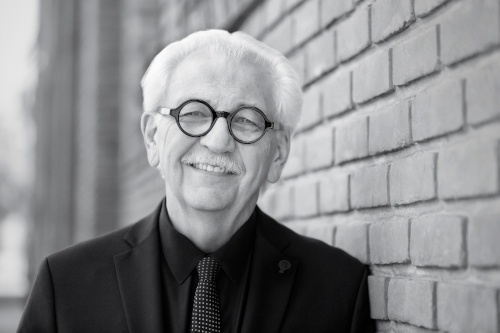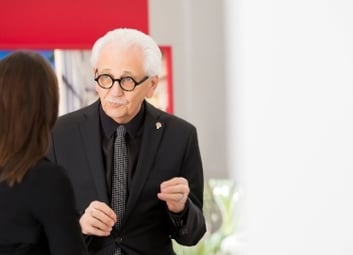Q&A: How to Develop a Career in Creativity
Tue, Apr 24, 2018 LPA Staff Creative Process, Marvin Malecha, Being a Creative, Design Thinking
Marvin J. Malecha, FAIA, is the President and Chief Academic Officer of NewSchool of Architecture + Design in San Diego, California, and the past President of the American Institute of Architects. An AIA Topaz Medallion honoree, Marvin has mentored thousands of students preparing to become design professionals and written a book on creativity, Being Creative: Being a Creative. In a discussion with Catalyst, he shares his unique perspective on people’s innate connection to creativity.
 How is NewSchool different in connecting design students with the profession?
How is NewSchool different in connecting design students with the profession?
Coming to NewSchool, there’s a strong history of focus on preparation for the profession, which I find to be wonderful and refreshing. We don’t simply train people in school, we educate them to be design professionals, which means they need to be well educated enough to understand the complexities of working with clients and program.
What does “well educated” mean to you?
There are three domains of knowledge that we live in: scientific, humanistic and design thinking. I like to compare it to an architect going into a swamp to create a building. You keep driving a pile everywhere and it just keeps sinking. Then suddenly you hit something solid and say, “Ah! I found something solid. I can build on that.” That’s what science does—they find a solid place, and they’re as intent on disproving an idea as proving it. In humanistic though, you learn what solid places exist for human beings to build, and what are examples from different cultures. The design thinkers are already thinking about not needing to drive a pile. Why don’t we float that building?
Most think that you are either one or the other of those. The truth is, we all think in all three rounds all the time. That is a well-educated person—somebody who appreciates and loves the arts as much as they love the sciences and they bring that to the studio.
Can anyone be creative?
Being “a creative” is much more interesting to me than being creative. Being a creative is all about how you approach curiosity. Being a creative means you’re a maker. Our most valuable trait is that we are seers; we see things that don’t yet exist. I believe we all have this urge within us to greater and lesser degrees.
It isn’t only the obvious people in the arts who are creative. A great business plan, for instance, can change the world. When Einstein was explaining riding on particles of light, he was practicing design thinking. He was seeing something in his imagination that exists beyond our normal comprehension, and in fact, he could not do in reality. His ability to use design thinking was propelling him to formulate this theory.

What does being a creative mean?
Don’t back away from the small things. Do the small things and perfect the process. Submit your projects on time, every time. Submit what’s required, every time. When you do that with rigor, your work responds to that and you develop a culture of excellence. You now have the space to think big because you’ve perfected the small.
Being a creative means you are in it; the rigor is there and you’re making and you’re iterating and you’re responding.
How do you teach creativity?
It requires that you take the creative energy within every individual, nurture, protect it from early criticism, and reward the discipline and rigor of the process. This does not mean coddling it. If somebody does not submit on time, there is a penalty. On another curricular front, we’ve stopped calling general education by that name because that doesn’t accurately describe what it is. We call it Integrative Studies, teaching students to appreciate the various bodies of knowledge they can draw on. We looked at every course we’re teaching and ask if it’s truly integrative. You’re not only learning English to learn English, you’re learning English to communicate in your discipline.
We offer a surfing class, and we cover the scientific, humanistic and design aspects of the sport. We have hydrologists from UC San Diego come in and talk about the hydrology of the coastline. There is education around the culture of surfing—the clothing, the music, the key players. And you have the design—design of the surfboard itself, design of the clothing and equipment. By the time you’re done with the course, you understand that surfing is something which is more than just surfing. It evolves from the creative tension of scientific, humanistic and design inquiry all at work together.
This story originally appeared in the latest edition of Catalyst, a quarterly publication that takes a deep dive into the new ideas, industry leaders and cutting-edge initiatives changing lives by design.